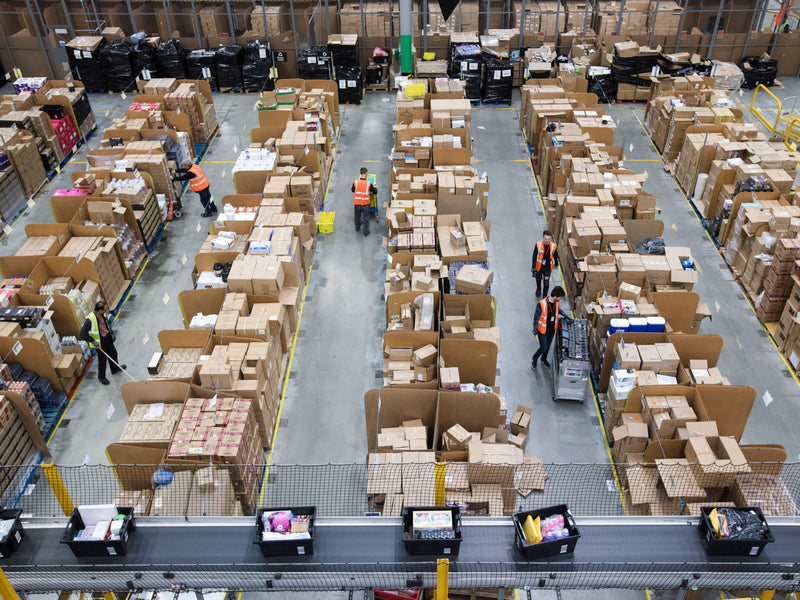Most eCommerce acquisitions fail to meet expectations after the deal closes. Here’s why, and how eComplete’s commercial due diligence and post-acquisition playbook turns underperformance into growth.
Acquiring a DTC or eCommerce business is only the beginning. The real challenge? Delivering growth and protecting margins after the ink is dry.
Many acquisitions, even those involving great brands fall short of expectations; Forecasts aren’t met. Customer acquisition slows. Margins tighten. Suddenly, what looked like a scalable asset becomes a costly underperformer.
At eComplete, we specialise in acquiring & scaling ecomerce businesses, unitlising both our commercial due diligence (CDD) and operating partner execution for DTC brands. We’ve seen firsthand the common pitfalls that sink post-deal performance and we’ve built the playbook to fix them.
Here’s what typically goes wrong, and how we solve it:
1. Overreliance on Paid Media
Why it happens:
Many DTC brands grow rapidly by leaning heavily on Meta or Google Ads. But when creative fatigue sets in, platforms change, or founders exit, acquisition costs spiral, especially when there's no diversified channel strategy.
Fix:
Diversify acquisition beyond paid social, implement sustainable CAC models, and build a performance engine with multiple growth levers.
How eComplete Solves It:
Our CDD process includes channel mix audits and ROAS trend analysis, revealing any over-dependence on single platforms. Post-acquisition, we rebalance acquisition with multi-channel testing roadmaps, rolling out influencer, affiliate, SEO, and retention strategies. Our creative team also rebuilds the brand’s paid strategy around modular assets, funnel structure, and testing frameworks, improving CAC and scaling efficiency.
2. No Real Post-Acquisition Plan
Why it happens:
Deals close without clear alignment on “what happens next.” There’s no owner for growth levers, no sequence of initiatives, and no 100-day plan to execute against investor expectations.
Fix :
Build a clear post-acquisition roadmap that aligns commercial goals with executable priorities across marketing, ops, tech, and finance (with ownership and timelines).
How eComplete Solves It:
We begin building the operating roadmap during the CDD phase, identifying revenue levers, margin opportunities, and operational blockers. We split this in to the first 100-days, and years 1,2,3+. Post-close, this becomes a fully owned execution plan for the asset with delivery support from our in-house operators, covering acquisition, internationalisation, subscription scaling, and operational improvements ( all tracked against investor-defined KPI).
3. Weak Operational Infrastructure
Why it happens:
Many eCommerce brands still run on manual processes, outdated tools, and fragmented reporting. These cracks widen quickly under the pressure of scaling.
Fix:
Modernise the tech stack, automate workflows, implement usable-action-driven reporting suites and build scalable systems for inventory, fulfilment, reporting, and customer service.
How eComplete Solves It:
During diligence, we conduct a comprehensive operational and tech audit, assessing tools, fulfilment partners, and reporting capability. Our team then implements our infrastructure playbook post-deal, migrating systems, consolidating reporting, and introducing scalable solutions. The result is a leaner, faster business with better unit economics and insight.
4. Limited Understanding of the Customer
Why it happens:
Acquirers often inherit a customer base without a real understanding of what drives LTV, who the most valuable segments are, or where churn risk lies.
Fix:
Build a deep, data-led understanding of customer behaviour and LTV by segment, then use it to drive product, pricing, retention, and creative decisions.
How eComplete Solves It:
Our CDD includes Customer DNA analysis, segmenting buyers by behaviour, LTV, channel of acquisition, and product affinity. These insights directly feed into post-deal strategies, informing retention campaigns, lifecycle journeys, upsell logic, and personalised creative, ensuring growth is driven by customer value, not just volume.
5. Key People Leave or Lose Focus
Why it happens:
Founders often exit or step back after acquisition, and key team members may become disengaged without clarity on roles or incentives leading to loss of momentum and knowledge.
Fix:
Identify team dependencies early, retain key staff, and rebuild team structures that align incentives and support scale.
How eComplete Solves It:
Our diligence includes key person risk assessment, mapping who’s critical to continuity and how to retain them. Post-close, we support transition by embedding fractional leadership, recruiting missing talent, and formalising workflows. Founders are kept strategically involved (if desired), and teams are given a clear operating structure to succeed within.
Why eComplete Is Different
Most M&A processes stop at the deal. We don’t.
eComplete combines data-rich commercial due diligence with hands-on operating expertise to deliver both insight and execution. We don’t just tell you where the value is, we help unlock it.
Our integrated model supports both investors and founders, with a proven track record of scaling brands across international markets, channels, and categories profitably.
Thinking about acquiring or investing in a DTC brand? or struggling to get traction post-close?
We partner with private equity, aggregators, and founders to turn great brands into high-performing businesses.



